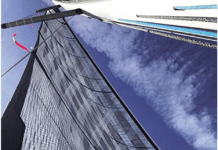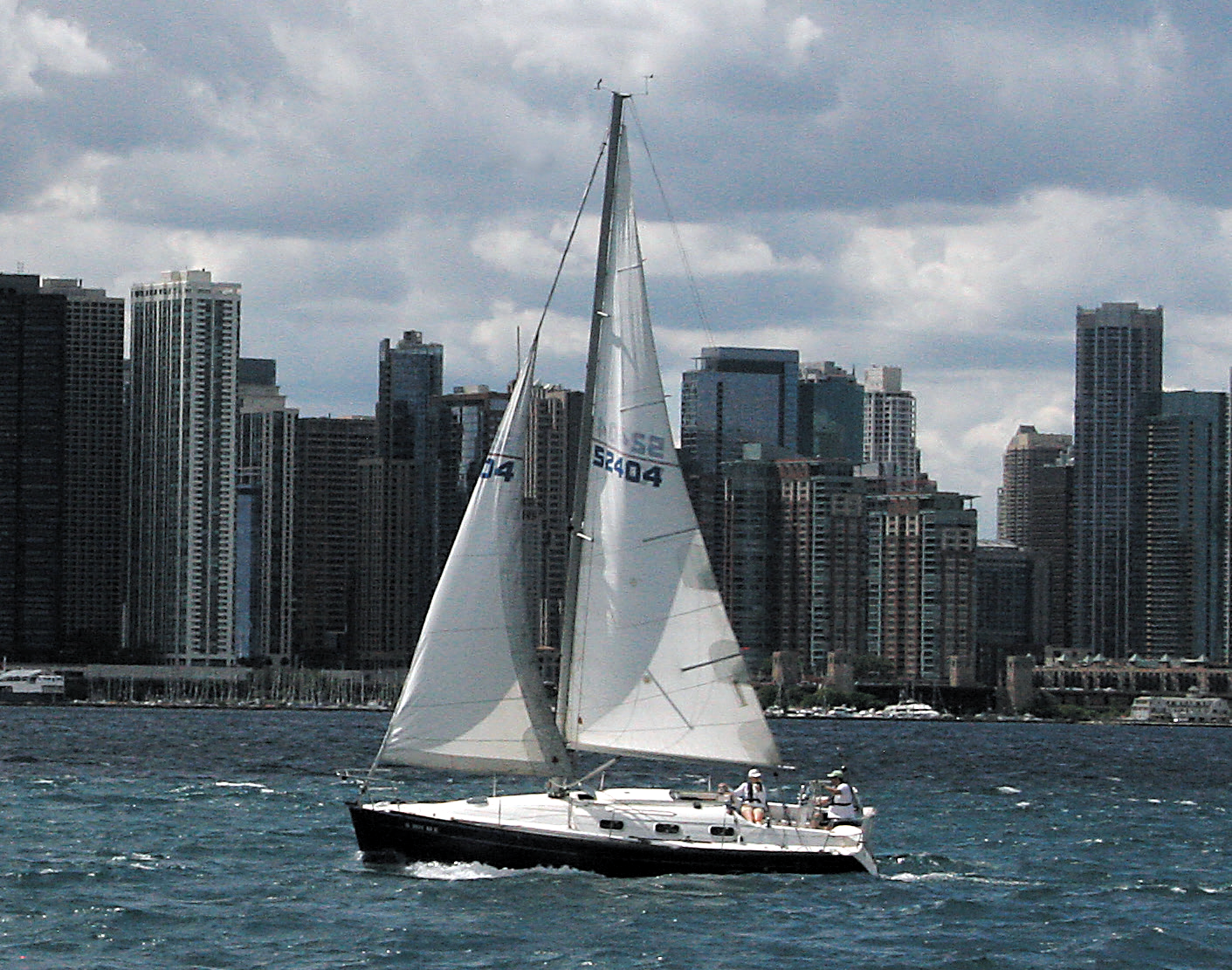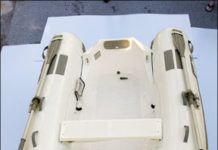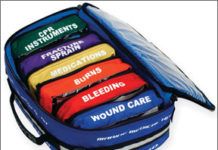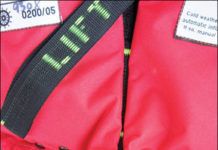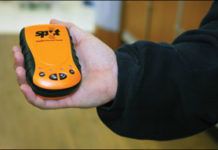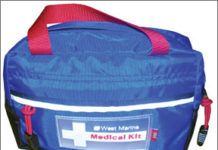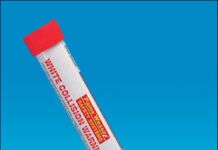Practical Sailor Tests Lightweight 10-foot Rigid Inflatable Boats
Eight fixed-transom Hypalon and PVC rigid inflatable boats (RIBs) from seven manufacturers were put through their paces as testers inspected each for on-the-water performance, inflation ease, lifting, seating, storage space, transom design, and hull design. RIB brands tested were AB, Avon, Achilles, Brig, Mercury, Caribe, and Zodiac. With a 9.9-horsepower Mercury outboard four-stroke engine pushing it, each dinghy was tested for speed, ability to plane, handling, tracking, stability, comfort level, and how well it deflected spray when powering through 1- to 2-foot wakes. The test RIBs from Achilles, Caribe, and Zodiac rated the highest in the field of fixed-transom rigid inflatable boats. Testers liked the ring-type oarlocks on the Caribe L10 and the Brigs bow handle. Practical Sailor pet peeves included bad oar stowage on most of the boats and thin rub strakes. Although classified as lightweight, the average weight of these test boats was 136 pounds.
Dinghy Accessories: Practical Sailors Gonna Pump You Up
When youre away from shorepower, a 12-volt dinghy pump can be very useful. During our recent evaluation of marine tenders and dinghies, we used four different 12-volt inflators to pump up the rigid inflatables being tested. Practical Sailor looked at the pumps speed, efficiency, noise, and volume of pumps while running, along with each pumps nozzles and adaptors, warranty, and price. The four pumps tested were the Metro Magic Air, Rule ID20, Scoprega Bravo 12, and West Marines 12-volt inflator/deflator.
Medical Kits for Coastal Cruising
Practical Sailors review of medical kits designed for coastal cruising is the second in a four-part series on on-board first-aid. The first part reviewed medical kits for daysailing, while this one examines medical kits for boats with a crew of one to four people where help may not be available for up to 12 hours. Practical Sailor examined the contents, packaging, instruction manual, and organization for four kits: Ocean Medical International (OMI) Class C Day-Tripper, Adventure Medical Marine 1000, Fieldtex Excursion, and Orions Open Ocean. Marine 1000 met most of the content requirements we deemed necessary for coastal cruisers needs, and it excelled at the organization.
Comparing the Latest Inflatable PFDs
One of the most important pieces of boat safety gear is a PFD, or personal flotation device. This update test included the reigning top inflatable PFD, Crewfit 150N, from UK-based Crewsaver, as a baseline for comparison of the other nine life jackets tested. The test field included Three SOLAS (Safety of Life at Sea) rated vests from European safety-gear maker Viking; two Coast Guard-approved PFDs from the Revere ComfortMax series; the new MD0450 inflatable vest with hydrostatic activation from Mustang Survival; and the inflatable bladder from Float-Techs popular float coat. Rounding out the field were a manual and an automatic PFD from West Marine, both of which are made by Stearns Inc. None of these had integral harnesses, though some have alternate versions with that option. PFD/harness combinations will be reviewed in a future issue.
The Art of Defying Gravity
It is easy to dismiss singlehanded ocean sailing as sheer madness. It is challenge enough to meet the sea in a small boat-why would anyone choose to do it alone? During our liveaboard years, my wife Theresa and I always seemed to connect with the singlehanders in the anchorage. Often, we ended up sailing in their company for weeks or months. Perhaps we were touched by a bit of madness ourselves. In retrospect, though, I think it was a mixture of sympathy and fascination that drew us toward singlehanded sailors. Theresa couldnt bear to watch a handsome sailor survive on rice and beans-most of them were young men with little money. And their spirit of adventure, if not sheer recklessness, intrigued me.
Saving the Man Overboard
Although Practical Sailor contends that the best way to save a crew member is to do everything possible to keep them on board in the first place (lifelines, jacklines, harnesses, tethers, non-skid decks, grab rails) and to perfect MOB drills, there are times when a crew member will go over. New waves of electronic devices on the market are designed to alert the crew to a man in the water, and to locate the MOB. These devices include beacons, alarms, and trackers aimed at expediting alert and recovery. Some products signal that a person is no longer on the boat. Other devices broadcast a radio (RF) signal that can locate a man overboard with on-board direction finding (DF) equipment Theres even a new type of mini-406-Mhz EPIRBs called Personal Locator Beacons (PLBs) that can summon the U.S. Coast Guard via satellite. Add to these choices the recently introduced satellite messenger system that can pinpoint the position of its owner and the choices become more varied. Practical Sailor evaluates a handful of these devices including Mobilarm MOBi-lert 720i and the 7200 and 7600 alarms, and Raymarine LifeTag alarm; beacons Emerald Marine Products Alert2, and Marine Rescue Technologies Sea Marshall SARfinder 1003, which is classified as a Maritime Survivor Locating Device (MSLD); and two personal locator beacons, ACR Electronics ResQFix PLB and SPOT Satellite Messenger. All Mobialarm units can interface with National Marine Electronics Association (NMEA) 0183-compatible devices.
Medical Kits for Onboard First-Aid
One of the most important pieces of gear on any boat is a first-aid kit. For evaluation purposes, weve divided pre-packaged medical kits into four categories, based on voyaging needs and price. Our first group, first-aid kits for less than $100, is designed for boats operating on waterways where professional medical help is available within hours. These are basic medical kits for small sailboats designed to help users deal with minor cuts and severe lacerations, abrasions, bruises and sprains. Sunburn, seasickness, head trauma, fractures, hypothermia, and burns are also medical issues daysailors need to be ready to cope with. Kits should include supplies such as band-aids, Ace bandages, gauze, aspirin, and tweezers. We reviewed four kits in this group, rating them on their contents, their storage container, organization, and price. The kits were the Adventure Medical 250, Ocean Medical Crew/Day kit, Fieldtex Day Pak, and West Marine 300. Our top pick contained all but one of the items on our list of basic requirements and came in a durable, shock-resistant case. It is also extremely well organized, making it easier to use in an emergency.
Deep Dirt: Whats the Best Inflatable Boat Cleaners For Stubborn Stains on a Dinghy?
The shelves these days are packed with an endless array of boat cleaners. A mild soap and elbow grease is often all that is needed. But when you are dealing with extensive coats of mold, mildew and dirt, deep cleaners are the ticket. Practical Sailor divided a neglected, filthy Avon Rover R250 into even sections and tested 11 inflatable boat cleaners. Three products scored an excellent rating. Products tested include the best products from Star Brite, MaryKate, Nautical Ease, Marine Development and Research Corp, Amazons, Seapower, Pennel & Flipo, Revival Ecological Paste, and Spray Nine.
Making the Old Dink New Again: Practical Sailor Turns an Old Fiberglass Dinghy into...
One mans dream to improve stability on his familys old Dyer knock-off becomes a quest to see if it is possible, and cost effective, to turn the old dink into a rigid inflatable using a inflatable tube kit from Walker Bay. As it turns out, it wasnt such a crazy idea after all. The family dinghy, an 8-foot Dyer knock-off acquired in the late 1980s, was the perfect tender. But two kids and a dog later, and the family dink no longer fit the family-particularly with the added weight of a four-stroke, 3.5-horsepower outboard clamped on the stern. Our tester was accustomed to the benefits of a hard dinghy-durability, the ability to sail it, superior rowing-but lusted after the increased stability and carrying capacity of an inflatable. A rigid-hull inflatable seemed to offer the best of both worlds, but the prices were out of this world. Besides, the old dinghy was still in great shape, so dropping the cash for an expensive new dinghy was unjustified. (Whats a tightwad sailor to do?) And thats how the idea for a DIY hybrid dinghy was born: We would make the old dink new with the addition of the inflatable tube from a Walker Bay RID (Ridged Inflatable Dinghy).
ISAF Bans White Handheld Flares
White hand flares have been used for signaling since the time of Nelson and Trafalgar. They were used in Civil War times, most famously aboard the ironclad Union ship USS Monitor as it was sinking in a gale off Cape Hatteras. Currently, hand flares are used by unruly fans as riot inciters in European football and basketball. Classified as hazardous materials, the active ingredients of white hand flares are black powder and magnesium. White hand flares emit NOx, a toxic byproduct. For obvious reasons, instructions are to hold the hand flare downwind. Burning magnesium on flesh, smoke inhalation, or having molten residue blowing down a companionway hatch can lead to dire consequences. In April 2006, a sailing instructor was severely injured while giving a demonstration of a white hand flare. This resulted in a total recall of white hand flares by their manufacturer, Pains Wessex.













